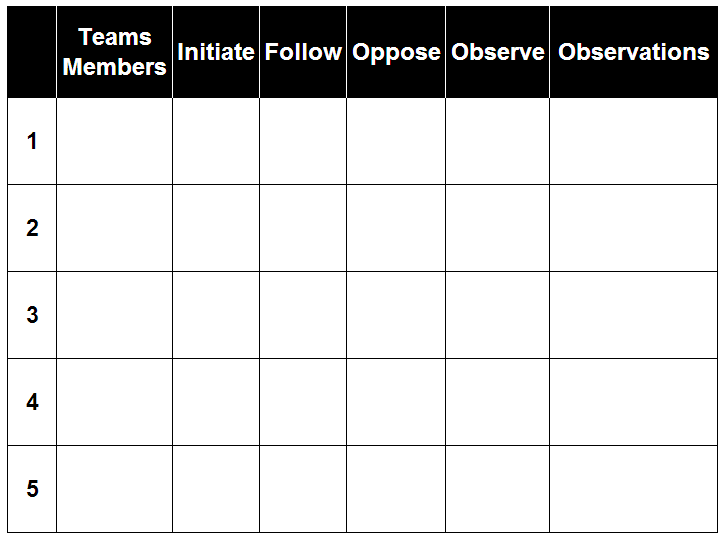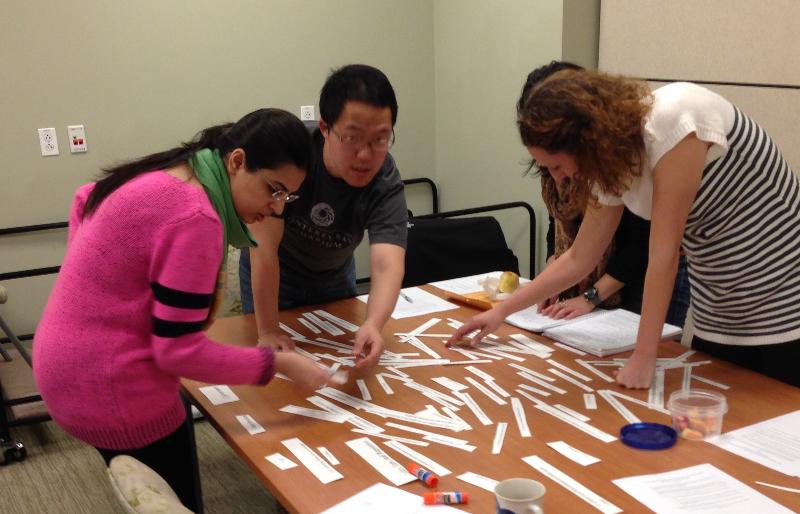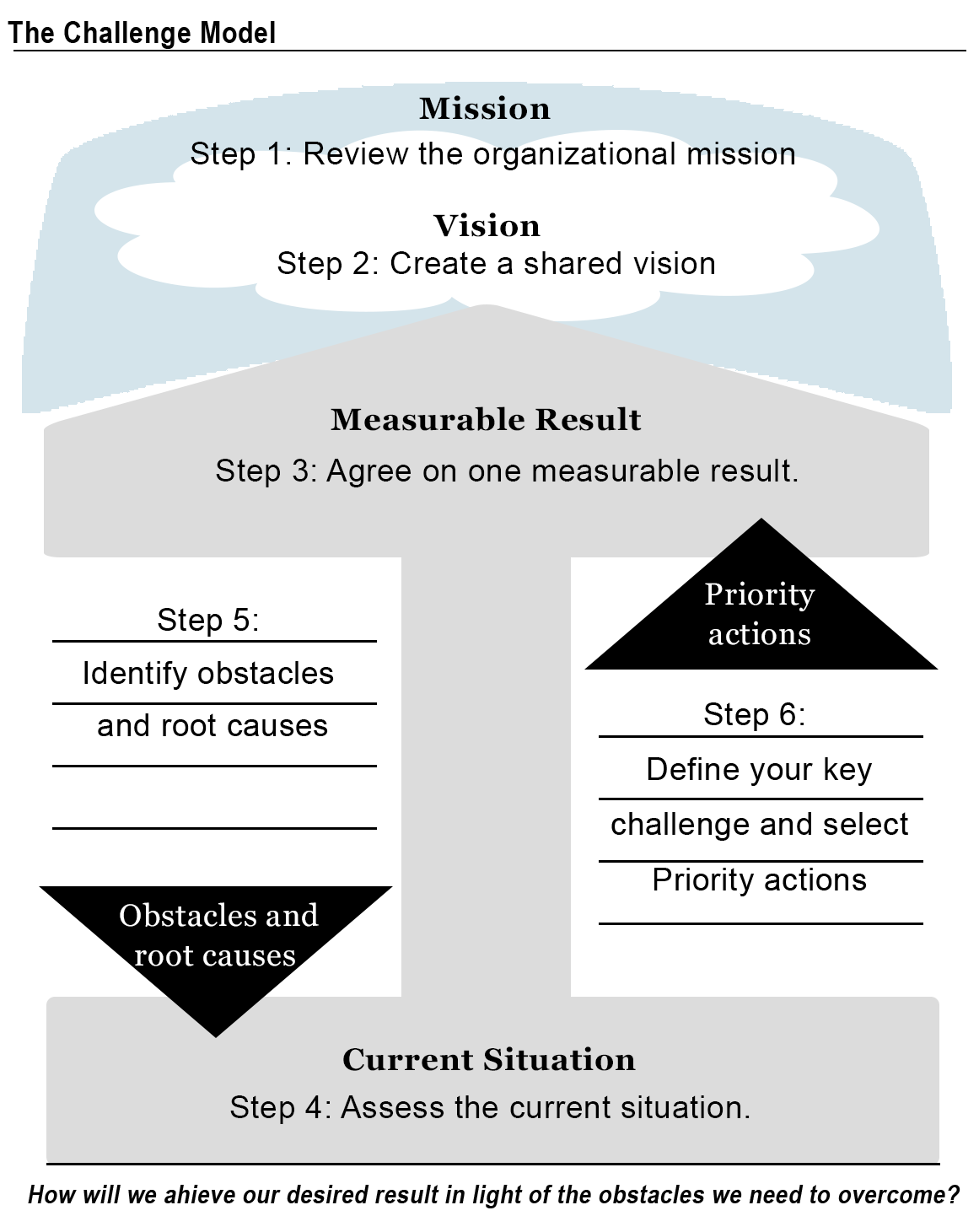Phase 2: Working in a Team Towards Results
In the video below, Joan Bragar introduces how to work toward results in a team.
A. Critical Roles in Teams
The objective is to use the 4 Player Model to identify team roles and dynamics and use these to improve teamwork.
Handouts include:
There are four moves you can make in teamwork. These moves can be played at different times by different people as suggested by the Four Player Model. These are to Initiate: start action, propose new ideas, Follow: accept the idea or proposal for action and support it actively, Oppose: question the direction, and Observe: watch what is going on.
In the video below, Joan Bragar explains the model and its usefulness in a BUSPH Community Health Sciences class on leadership.
The positive and negative aspects of these moves which we can also consider as roles are summarized in the table below. Source: David Kantor, Reading the Room: Group Dynamics for Coaches and Leaders (Jossey-Bass, 2012)
| Role | Positive Outcomes | Negative Outcomes |
|---|---|---|
| Initiate | Gets action started | Dominates |
| Follow | Supports movement or action | Mindlessly agrees |
| Oppose | Thinks critically | Obstructs |
| Observe | Reflects and gives feedback | Acts passively |
Reflect on Your Role in a Team
Jot down responses to the following questions for later reflection.
- What role(s) that you play make your group(s) function most effectively?
- What do you need to be careful about or mindful of when you play one of these four roles on a team?
Observer Format of Moves in Teamwork
One informative exercise is to observe the interaction of team members in a group. Each time they participate, put an X in the appropriated column depending on what kind of move they are playing: initiate, follow, oppose or observe and make comments about the process. Use the column on the right to make comments on what is the main moves each member played and how they affected the team dynamic.

Supporting Your Team
"The morale of team members plays a crucial role in any program's success. If the self-confidence of the team members is low and the leader does nothing to build it up, the team is very sure to break down."
— Samsonraj Pandian, World Vision, India

To keep the members of your team inspired and motivated, point out and celebrate incremental results, and link those results to specific actions they have taken. Above all, acknowledge and praise both individuals and the team on a regular basis, and be there to support them.
As mentioned in Managers Who Lead, A Handbook for Improving Health Services, it is important to acknowledge your team. As you team works to face its challenges and implement the action plan, be sure to:
- show appreciation regularly to individuals and the team for their work;
- acknowledge the challenges they are facing;
- praise them whenever their work is well done, even if it is not at a major milestone;
- thank them for their commitment and their daily efforts;
- recognize them for their accomplishments and show how their work has made a difference
In implementing a new action plan, particularly when it involves changing how things have been done before, you should expect to encounter obstacles. Even though you and your team are fully committed to the plan, you are still learning as you go and finding out what you need to achieve your results. Some times people outside the team (and maybe even some of your team members) may need explanations to understand the reasons for doing things differently and encouragement to try the new way. Other times you may need to work harder on aligning your outside stakeholders around the challenge so you can get their cooperation.
When you run into a sizable issue, it can lead to a breakdown. How you handle the breakdown is what matters.
B. Leading Your Team Through Breakdowns
The objective is to identify signs of a breakdown and diagnose the steps to get the team back on track.
One of the differences between a group of individuals and a high-performing team is that, in a team approach, difficulties and breakdowns are expected and embraced, and the team addresses the breakdowns together. Help your team identify breakdowns and see them as catalysts for understanding what is missing or what stands in the way of achieving the results you desire.
What is a breakdown?
A breakdown is any situation that:
- threatens progress toward a commitment
- violates an explicit agreement
- presents uncertainty or difficulty
- stops effective action
- presents obstacles to fulfilling your commitment
Examples of breakdowns
- One member of the team isn't coming to meetings
- Your client never replies to your e-mails
When they are not handled well, breakdowns lead to minimizing or ignoring problems, blaming each other, or eroding teamwork, trust, and effectiveness. When handled well, breakdowns can be a major source of breakthroughs or finding new ways to approach your work and achieve results. To change how you think about and approach breakdowns, remember that:
- all large commitments will have breakdowns;
- the greater your commitment, the more and greater the breakdowns will be;
- when there is no commitment, there will be no breakdowns.
It is your job to help your team's members understand how to respond to breakdowns and to work with them to approach problems together and find a way through that will result in new and better ways of doing things.
For ways to lead your team through breakdowns, see the exercise in the handbook toolkit called "Coaching through Breakdowns."
Coaching Your Team through Breakdowns
The objective of this exercise is to help when a group has experienced a breakdown and needs a process to resolve the issues. Designed for use with a small team that has been working together on an initiative or project, it helps make the process of addressing and resolving breakdowns a non-threatening learning experience.
Process for addressing and resolving breakdowns:
- Discuss what a breakdown is...has progress been stopped by uncertainty or lack of clarity? Are there details that seem to be ignored?
- Discuss new ways to approach breakdowns...remember breakdowns can often be opportunities of "finding a new way" to meet your commitments together.
- DO NOT AVOID a conversation about a breakdown...distribute the Breakdown Conversation Sheet
Breakdown Conversation Worksheet
Think of a breakdown your team has recently experienced. Then jot down responses to the following questions for later reflection.
- What was the breakdown? Briefly describe what happened.
- What were you committed to? Describe the commitment of you or your team.
- What was missing that caused the breakdown to occur?
- What do you learn?
- What actions could you take now?
C. Using the Challenge Model
The objective is for teams to work together to define current conditions and analyze the obstacles that are in the way of achieving desired results.
The Challenge Model provides a systematic approach to creating a shared vision of the future and helping teams identify a challenge and a desired, measurable result. The process leads them to assess factors in the external and internal environments related to their desired result, and plan and implement priority actions to address the root causes of their obstacles.
Review your organizational mission
With your team, agree on a common understanding of your organization's mission.
Create a shared vision.
Work with your team to create a shared vision of the future that will help your organization achieve results. What does it look like when you are successful in accomplishing results in this area? This shared vision will inspire the team to face each new challenge.
Agree on one measurable result.
Pick an aspect of your shared vision and identify a measurable result that you all want to achieve and that can be achieved in a short time frame. This measurable result is what will drive your work. Because it is measurable, it allows you to monitor and evaluate your progress toward achieving it. Note that you might decide on a result and then need to change it as you gain more information. As you learn more about the current situation and obstacles you need to overcome, you may need to redefine your stated result until it is appropriate and realistic.
Assess the current situation.
Scan your internal and external environments to form an accurate baseline of the conditions that currently exist related to your selected health area and the chosen health indicators.
Identify the obstacles and their root causes.
Make a list of obstacles that you and your team will have to overcome to reach your stated result. Use root cause analysis tools to analyze the underlying causes of these obstacles to make sure you are addressing the causes and not just the symptoms.
Define your key challenge and select priority actions.
You write your challenge statement as a question: "How will we achieve this result in the face of these obstacles?" Then select priority actions that you will implement to address the root cause obstacles.
Develop an action plan.
Develop an Action Plan that estimates the human, material, and financial resources and the timeline needed for implementing your actions.
Implement your plan and monitor and evaluate your progress.
Support your team in implementing the plan, and monitor and evaluate your progress toward achieving your result.

Developing an Action Plan
Before you can begin to implement your priority actions, you need to develop an action plan. Developing an action plan is one of the managing practices. The action plan provides you and your team with a clear path for taking action, monitoring progress, and measuring results. As highlighted in the action plan worksheet, an action plan should identify the following at a minimum:
At a minimum, an action plan should identify:
- the actions or activities that will be implemented;
- who will be responsible for carrying out each action;
- the human, financial, and material resources needed to implement the actions;
- a timeline showing when the actions will be carried out.
Plans are more likely to be implemented and bring results when they:
- are created and owned by the team and reflect the shared vision of the team;
- address a well-defined challenge that is based on an observable gap between desired and actual performance;
- contain measurable indicators that allow you to see that the performance gap is closing;
- Focus on specific challenges and set new priorities as needed;
Align your team members to work together to deal with problems as they arise, mobilize new resources, and align new stakeholders as needed. Often during implementation, the priorities you have set compete with other urgent work that arises. These competing priorities can divert you and your team from what is most important.
Quality Check of an Action Plan
To check the quality and logic of your action plan, answer the following questions:
- Are there activities for each of the priority actions?
- Have you included activities for all of the leading and managing practices?
- Is the desired result SMART?
- Have measurable indicators been defined that will tell you whether or not your team has achieved the desired result?
- Do the activities listed in the plan contribute to the achievement of your desired result?
- Are specific people identified to be responsible for the completion of each activity?
- Have all the resources been identified?
- Does each activity have a time frame?
- Is there anything else that you should add to your action plan?

